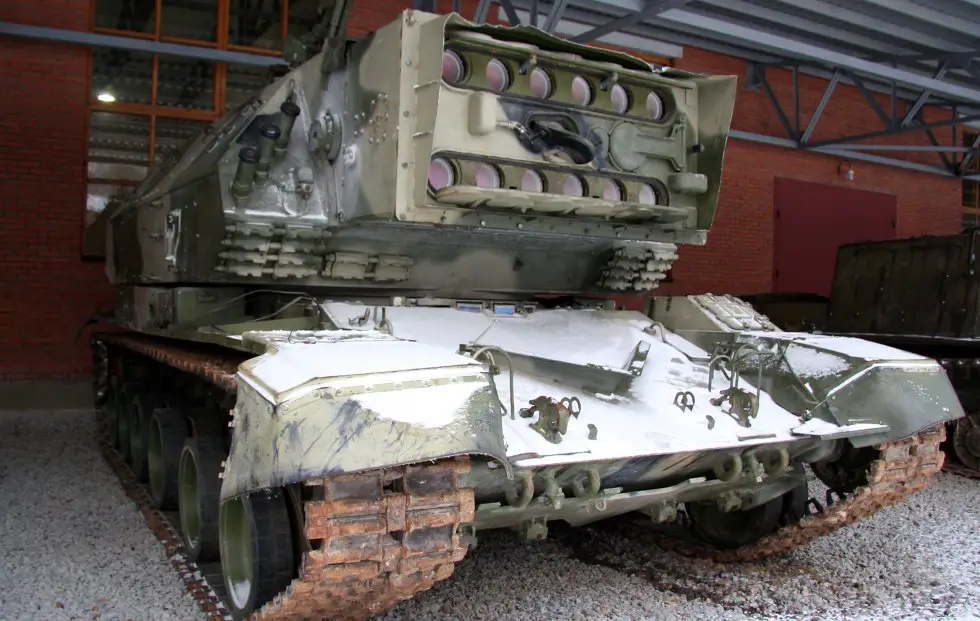Russia focuses on combat laser development (part 1)
The Russian laser weapons are one of the most classified issues even after President Vladimir Putin publicly demonstrated a film about the engagement of a combat laser. The head of state limited his announcement to a general statement, expert Pavel Ivanov writes in the Military-Industrial Courier.

Laser tank 1K17 Szhatie (Picture source: Wikipedia)
Industrialized nations have been developing laser weapons for long. Despite fantastic characteristics attributed to them, the weapons have a narrow niche in modern wars and armed conflicts for a simple reason. Scientists so far failed to resolve the main task and obtain such a powerful laser which can immediately burn the metal and thus operate as a means of destruction. The beam so far can quickly heat the surface and destroy optical and electronic systems.
Lasers are used on the battlefield to detect and destroy monitoring devices, targeting complexes, homing warheads, and to blind the pilots of attacking aircraft and helicopters. The British military planned to deploy the first prototypes of such lasers in 1982 on aircraft-carrying ships engaged at Falkland Islands. But it is still unknown whether the plan was implemented.
Occasional reports about US deployment of combat lasers appeared during the Desert Storm aggression in Iraq in 2003. But like with Falkland Islands there were no reliable confirmations to the reports. At present the United States wants to arm a warship with a laser. A ground laser is undergoing trials.
In the 1980s the Soviet Union was the leader in laser weapons. In particular, several seaborne complexes were tested and their serial production launched. Stilet 1K11 and Szhatie 1K17 lasers were produced for the ground forces. Various reports said a dozen of the weapons was made.
Laser is engaged in missile defense. It heats the hull of a missile with explosive components and it self-destructs. The weapon was carried by YAL-1 Aladin flying laboratory. At present the project has been closed and the aircraft stands idle.
The Aladin problem was that explosive components or fuel is contained only in missile stages. The reentry vehicle does not fear heating and it is necessary to closely approach the launch site. But it poses a risk for the aircraft to be intercepted by adversary air defense. Therefore, after successful trials in 2010 YAL-1 was sent for storage and dismantled in 2014. However, the project of an airborne laser was not closed.
The United States is currently working to create a combat laser for strategic unmanned reconnaissance RQ-180 (or Boeing-777 aircraft by another version). It is expected to heat targets outside the atmosphere of the Earth due to a considerably increase in power. The project is top secret at present. The interception above the atmosphere avoids destruction of the flying laser by air defense. Satellites will definitely be another US target. Besides blinding optical-electronic systems of spacecraft, the laser will heat and destroy them.
Like with ground and seaborne systems Soviet and Russian scientists were the pioneers in the sphere. A-60 Sokol-Echelon system was created in late 1980s on the basis of Il-76 airlifter. It did not heat ballistic missiles but could fight satellites.
So far, the introduction of combat lasers is impeded by two reasons. Firstly, it is necessary to equip them with powerful electricity generators. This is why the lasers are installed on warships and aircraft. If we look at YAL-1, we shall see that the laser resembles a ball in the front of the aircraft. The remaining space in Boeing-747 fuselage is occupied by power generators.
High costs are the second reason. Sophisticated and expensive lenses and many kilos of artificial rubies are necessary to make the laser operational. But the weapon has a clear advantage against traditional arms which is an endless set of rounds and a much cheaper single shot.
Visit part 2 of this analysis at this link


























